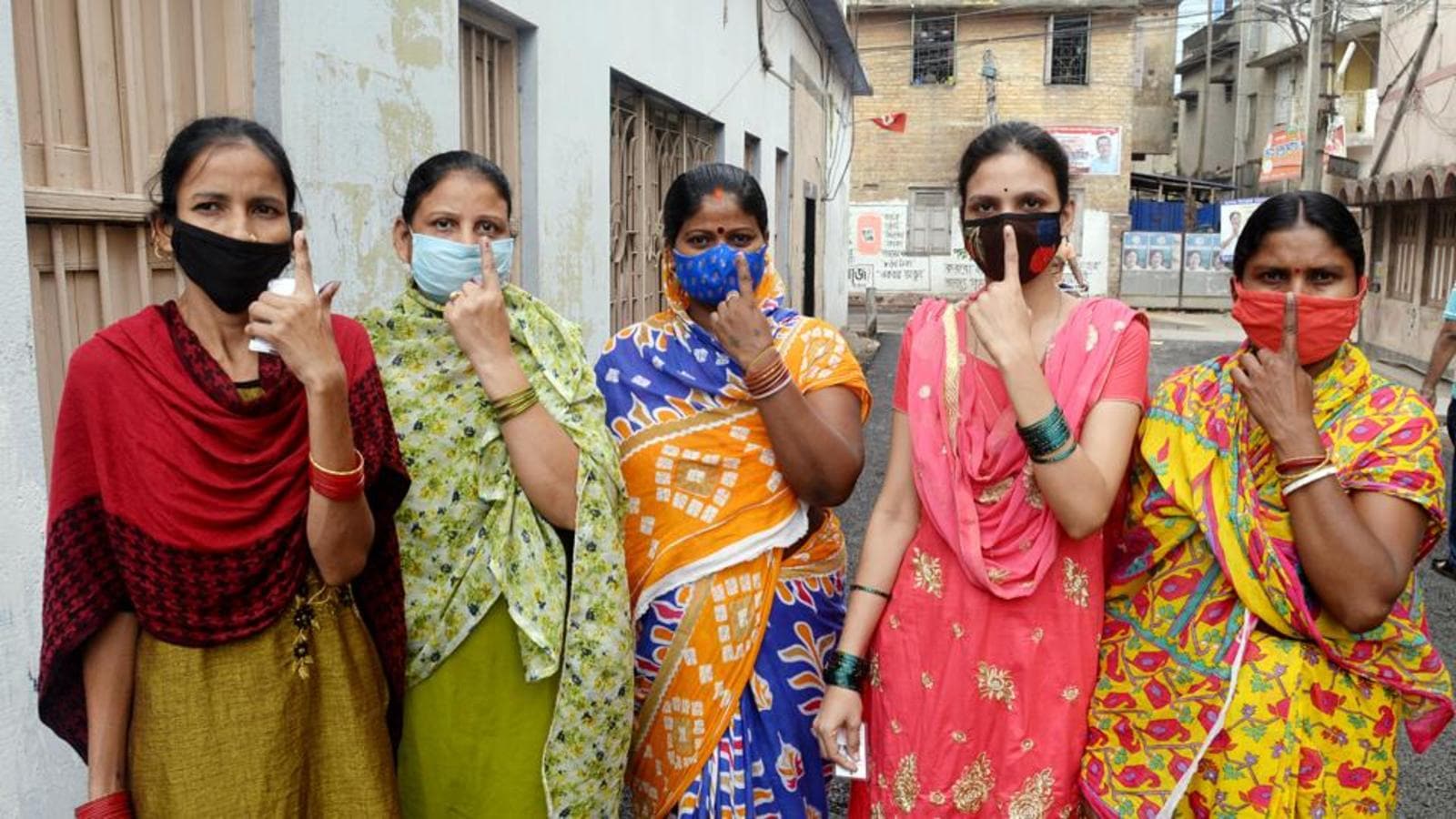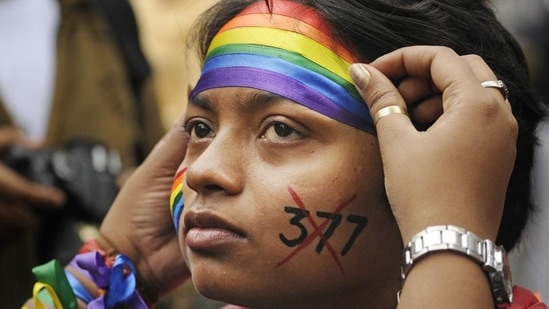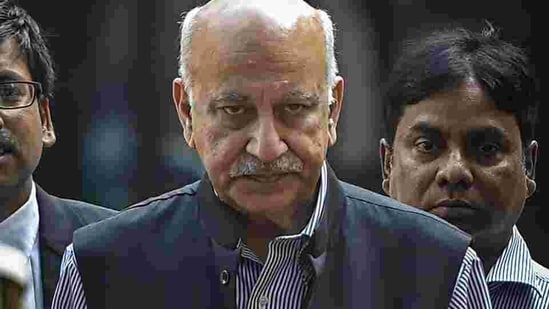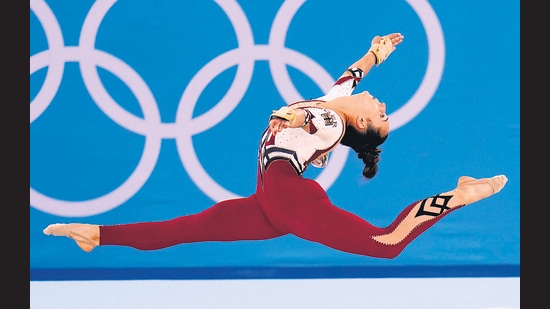A new variant of Covid in full throttle has tempered the hope that traditionally comes with a new year. It’s also a grim reminder of just how hard it is to dislodge that other ‘p’ word, patriarchy. What are the trends that will define India’s gender agenda in 2022? This edition of Mind the Gap takes a look.
Women, work and the pandemic
With a new variant of Covid-19, economic disruptions and partial lockdowns will continue to disproportionately impact women’s workforce participation. By November 2021, women’s workforce participation was still down by 11%, compared to 1% for men, says economist Mitali Nikore analysing numbers provided by the Centre of Monitoring Indian Economy.
Stricter mobility restrictions will continue to hamper women’s employment opportunities. Across income groups, women are also reporting an increase in unpaid care responsibilities—cooking, cleaning and caring for children, parents and the sick–leaving them with little time to work outside the home.
The gig economy will continue to provide women with flexible employment, but these come without security, as the labour agitation at Urban Company has shown.
Existing gender digital divides will also continue to impact both girls’ access to online classes and women’s access to online business opportunities.
Women’s free fall from paid employment receives almost zero attention from law-makers, policywalas and the media. In the absence of targeted policy intervention, the dismal picture of women’s paid employment is unlikely to change.
The irresistible rise of the women voter

Women are still excluded from the nearly all-male preserve of state assemblies and Parliament, but every political party fears the mighty woman voter. As seven states go to the polls, expect to hear more announcements from parties promising monthly stipends and job quotas and goodies ranging from smartphones to scooters for women and girls.
This new found love for women is easy to understand. Women voters have been turning out in increasingly large numbers – often outnumbering men. More crucially, it is now clear that where women turn out to vote, they can, and do, swing the elections, as they did in West Bengal where Mamata Banerjee’s TMC got 50% of the woman vote (compared to just 37% for the BJP).
Taking a leaf out of Naveen Patnaik and Mamata Banerjee’s playbook in the 2019 general election when their parties set aside quotas for women contestants, Congress general secretary Priyanka Gandhi has said her party will field 40% of women candidates in the Uttar Pradesh election. If this gamble pays off in terms of electoral results, expect more parties to follow suit.
Marriage age bill

Already in election rallies, the BJP has been dressing its new bill to raise the marriage age of women in terms of empowerment: Making 21 the minimum age to marry for both men and women will bring gender uniformity. Delaying the legal age of marriage will also enable girls to study for longer, delay the age of maternity and help bring down both maternal and child mortality.
Women’s activists are not buying the argument. Already 1.5 million girls under 18 get married every year, according to the United Nations, making India home to the largest number of child brides in the world. Raising the minimum age to 21 will only add to the number of child brides, rendering an even greater number of girls vulnerable in marriages that have no legal recognition.
To empower women, give them greater agency and a voice in whom and when to marry. Show the political muscle to put an end to India’s enduring shame of “honour” killings where parents kill their own children for daring to fall in love. And stop criminalizing choice in the name of “love jihad” laws.
The answer is a change in attitude and not legislation.
LGBTQI+ equality: the next frontier

With the Delhi High Court set to swear-in its first openly gay judge, the new frontiers in the equality battle will shift to wider issues of inclusion, including marriage equality as the courts hear from petitioners on why the state needs to grant legal recognition to their unions to enable them to adopt, inherit and even operate a joint bank account.
Recent court rulings have upheld the marriage of a cis man and a trans woman (Madras High Court) and an order to the state to ban sex-reassignment surgeries on infants and children as the “consent of the parent cannot be considered as the consent of the child” (also Madras High Court).
Courts have asked for medical textbooks to be scrubbed clean of homophobia. They will be looking at the dubious practice of forced conversion therapy. As the year came to an end, the Madras High Court (again) gave orders for the state to come up with a list of words and expressions to address the LGBTQI+ community in a “dignified” way.
Baby steps? Yes, but onward and forward is the way.
The stickiness of MeToo

A year ago, women (and a few good men) were celebrating India’s first MeToo win when, after 53 court hearings over 28 months, a trial court judge acquitted journalist Priya Ramani of criminal defamation charges filed against her by former minister M.J. Akbar.
The euphoria didn’t last long as Akbar exercised his legal option to file an appeal against the verdict. The case is now scheduled to be heard by the Delhi High Court on January 13. Meanwhile, Akbar is reported to have joined a media company as an editorial consultant.
In Chennai, Tamil film-maker Susi Ganesan responded to charges of sexual harassment made against him by the film-maker Leena Manimekalai by 1. Filing criminal defamation charges against Manimekalai, 2. Applying in court to have her travel documents impounded and 3. Writing to the Canadian university where she studies to have her scholarship revoked. Journalists reporting the story say they have been harassed with anonymous calls.
In Kerala, new evidence has emerged that Malayalam actor Dileep could have links with one of the men accused of sexually assaulting a woman actor in a moving car in 2017 and could have influenced a key witness in the case.
Even as companies scramble to be compliant with India’s anti-sexual harassment law, the cases are a chilling reminder of the unacceptably high price on women who speak up. This is not likely to change in the coming year.
Going places: Women in sport…

We’ve come a long way from 2000 when Karnam Malleshwari became the first Indian woman to win an Olympic medal, a bronze from the Sydney Olympics. Two decades later at Tokyo, the reckoning included Saikhom Mirabai Chanu, Lovlina Boroghain, P.V. Sindhu and Rani Rampal, captain of the women’s hockey team.
States like Odisha have responded to stories of individual grit by setting up infrastructure that will tap into individual talent. Non-profits like GoSport have spent years creating a sporting ecosystem that supports men, women and the differently abled. Cash awards, government jobs and recognition have also led to more families encouraging their daughters to play.
For the women themselves, the greatest reward is personal transformation. Sport, Rani Rampal told journalist Sharda Ugra “makes us brave”.
That’s it for this week. I’ll be back next week with a wrap of the week’s gender news: big story, newsmaker, field notes and more. If you have a tip or information on gender-related developments that you would like to share write to me at: namita.bhandare@gmail.com.
| Were you forwarded this email? Did you stumble upon it online? Sign up here. |
| Written by Namita Bhandare. Produced by Nirmalya Dutta. |



